Planting ranunculus bulbs can transform your garden into a vibrant oasis of colorful, lush blooms. Whether you’re a seasoned green thumb or just starting your gardening journey, ranunculus flowers offer a stunning reward for your efforts. By taking the right approach, you can enjoy their beauty for years to come. This guide provides you with seven essential tips to ensure success when planting ranunculus bulbs.
Table of Contents
Preparing to Plant Ranunculus Bulbs
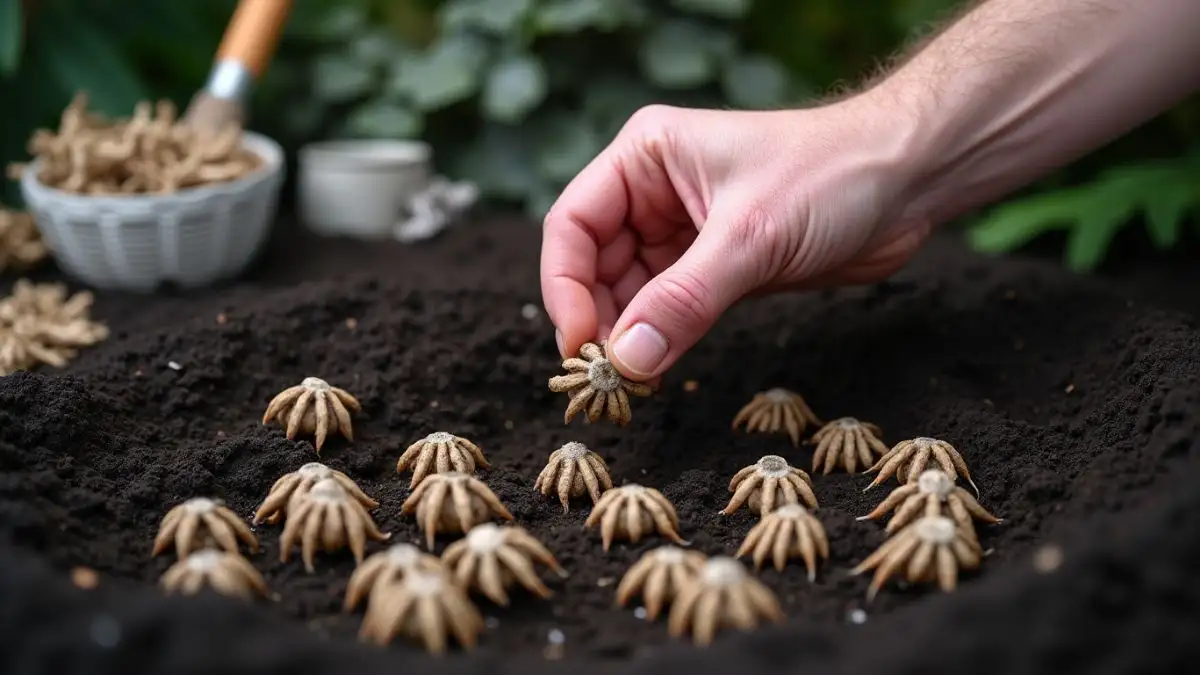
Your journey begins with preparation. Setting the stage correctly is crucial for healthy growth and abundant blooms.
Choose High-Quality Bulbs
Start with high-quality ranunculus bulbs, often called “corms.” Look for bulbs that are firm, free of mold, and plump. Avoid bulbs that feel overly dry or brittle, as they may not sprout properly. High-quality bulbs set the foundation for vigorous growth.
Understand the Best Planting Time
Ranunculus thrives in cool weather. In warmer climates, such as USDA zones 8-11, plant your bulbs in the fall for spring blooms. If you live in colder regions, wait until the last frost has passed in the spring. For gardeners wondering when to plant ranunculus zone 7, the optimal time is late winter to early spring, ensuring the ground has thawed but temperatures remain cool.
Optimize Soil Conditions
Ranunculus bulbs prefer well-drained, nutrient-rich soil with a pH between 6 and 7. Sandy or loamy soil works best. Improve drainage in heavy clay soil by adding compost or perlite. Proper drainage is crucial to prevent root rot, making this step essential.
| Soil Amendment | Benefit |
| Compost | Adds nutrients |
| Perlite | Enhances drainage |
| Garden Lime | Balances soil pH |
Choose the Right Location
Ranunculus bulbs require a sunny location to thrive. Choose a location that gets a minimum of 6-8 hours of direct sunlight each day. In hotter climates, some afternoon shade can help prevent wilting during peak heat.
Soaking and Pre-Sprouting Bulbs
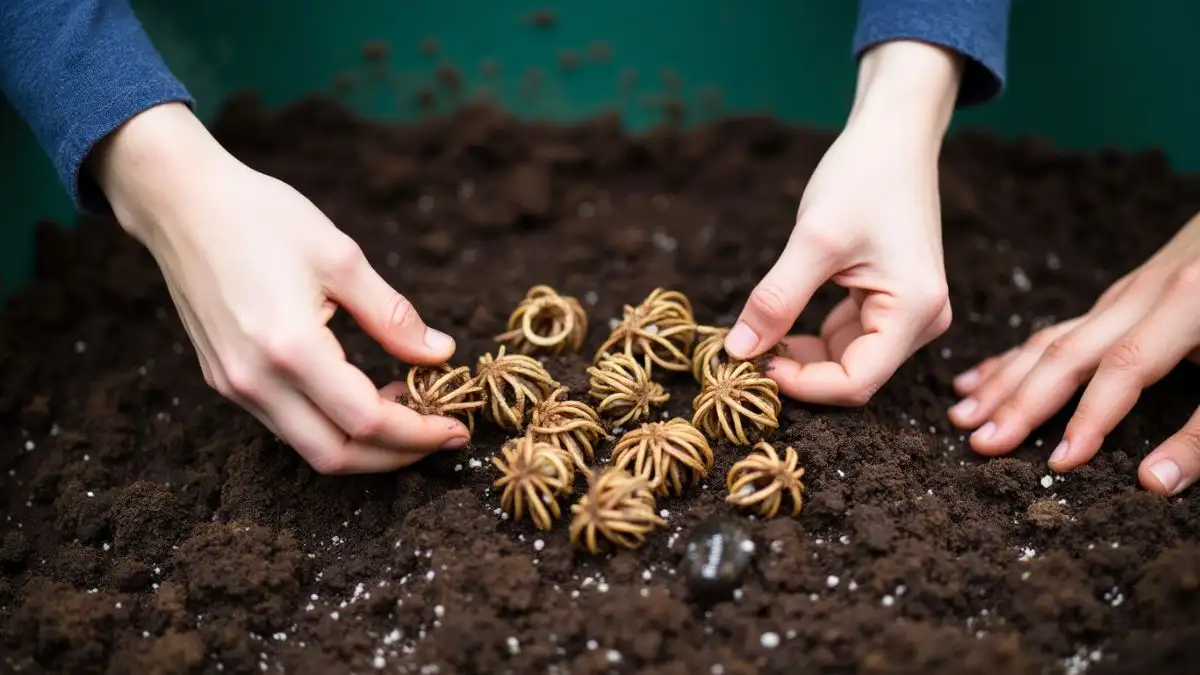
Prepping your bulbs before planting enhances their chances of thriving. Here’s how:
Soak the Bulbs
Soak the bulbs in lukewarm water for 3-4 hours to hydrate them. This step helps them wake up from dormancy and prepares them for planting. Hydrated bulbs grow faster and stronger.
Pre-Sprout for Faster Growth
After soaking, place the bulbs in a tray with damp potting soil. Keep them in a cool, dark place (around 50°F) for 10-14 days. Check regularly to ensure the soil stays slightly moist but not soggy. Pre-sprouting gives your ranunculus a head start, especially if you’re growing ranunculus in pots where conditions can be controlled.
How to Plant Ranunculus Bulbs Correctly
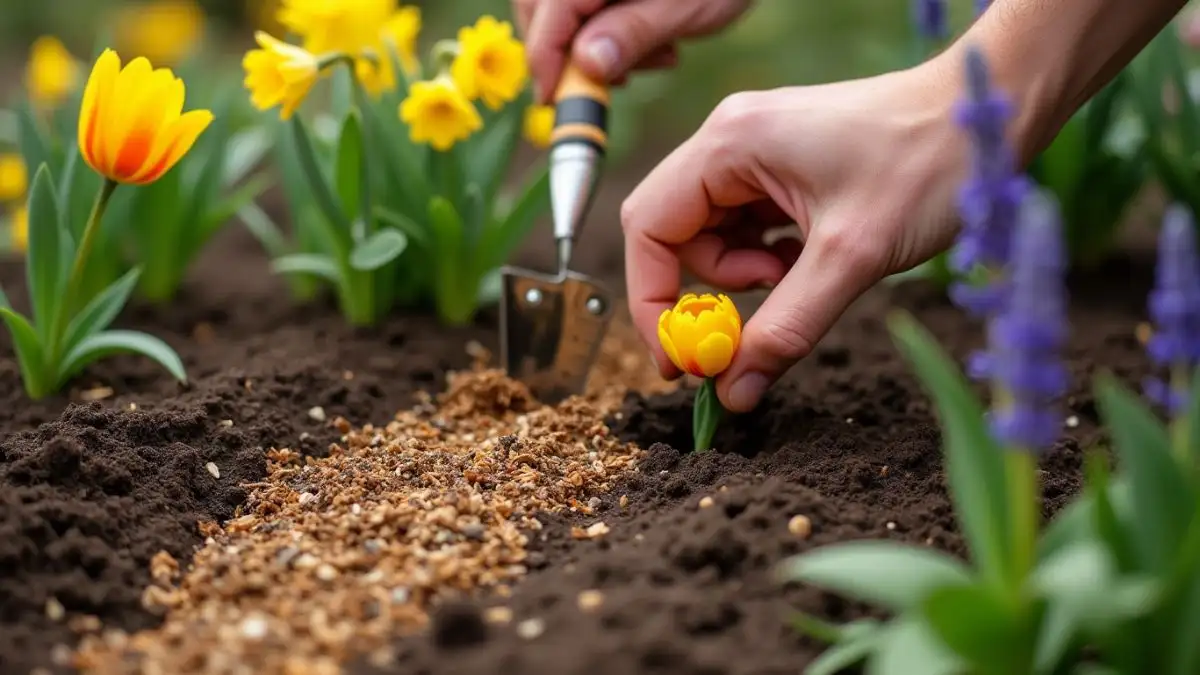
Proper planting technique is essential for strong growth and beautiful blooms.
Depth and Spacing
Plant your ranunculus bulbs claw-side down, 2 inches deep and 4 inches apart. This allows their roots to spread and establish effectively. Crowded bulbs may compete for nutrients, leading to fewer blooms.
Companion Planting
Ranunculus pairs well with other spring bloomers like tulips and daffodils. Their complementary colors and similar care requirements make them ideal companions. Additionally, planting ranunculus alongside pest-repelling herbs such as lavender or rosemary can protect your garden naturally.
Mulching
Apply a thin layer of mulch after planting to retain soil moisture and regulate temperature. Mulch also helps prevent weeds from competing with your bulbs for nutrients.
Watering and Caring for Ranunculus Bulbs
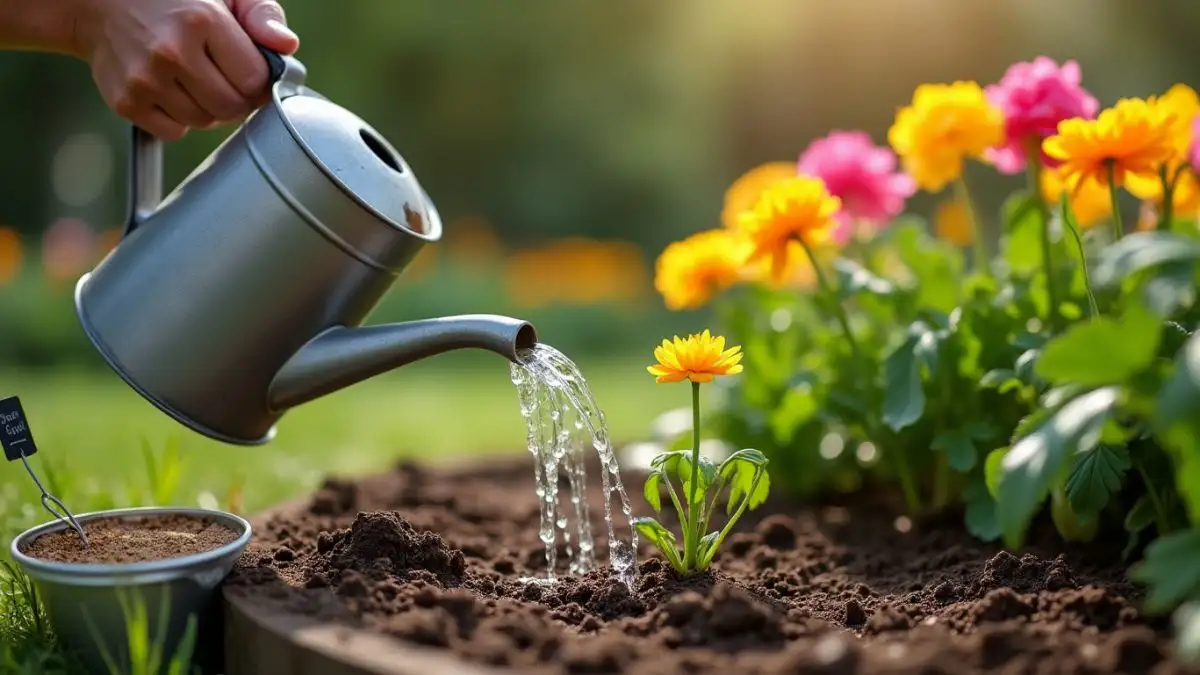
Proper care after planting ensures your ranunculus thrives.
Water Wisely
After planting the bulbs, water them right away to help settle the soil. Maintain consistently moist soil, but be careful not to overwater, as this can lead to rot. Water deeply once a week during dry periods, and reduce watering once blooms appear.
Fertilize Regularly
Feed your ranunculus with a balanced fertilizer every 2-3 weeks during the growing season. For optimal results, choose fertilizers with balanced amounts of nitrogen, phosphorus, and potassium. Organic options like bone meal or fish emulsion are great for promoting healthy growth.
Monitor Sunlight Exposure
While ranunculus loves full sun, monitor their exposure in extremely hot climates. If leaves show signs of scorching, consider providing light afternoon shade to protect the plants.
Protecting Ranunculus from Pests and Diseases
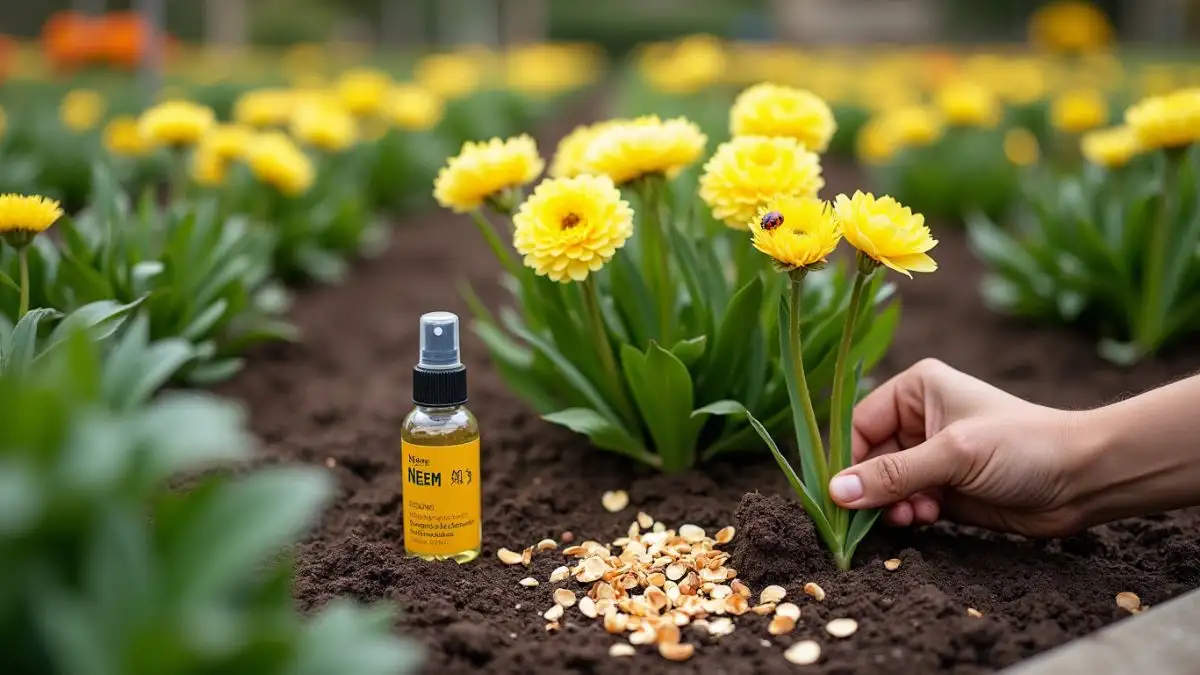
Like all plants, ranunculus is vulnerable to pests and diseases. Protecting them ensures healthy growth.
Common Pests
Ranunculus often attracts aphids, slugs, and spider mites. Use natural pest repellents like neem oil or introduce beneficial insects such as ladybugs to keep these pests at bay. Slugs can be deterred by placing crushed eggshells or copper tape around your garden beds.
Disease Prevention
Ensure proper air circulation by spacing bulbs adequately. To minimize the risk of fungal infections like powdery mildew, avoid watering from above. Apply a fungicide if you detect any signs of disease.
| Pest/Disease | Solution |
| Aphids | Neem oil or ladybugs |
| Fungal Infections | Proper spacing and watering |
| Slugs | Crushed eggshells or barriers |
Winter Protection
In areas prone to frost, cover your garden bed with frost cloth or a thick layer of mulch to insulate the bulbs. This helps prevent freezing damage during unexpected cold spells.
Encouraging Blooms and Extending Flowering Season
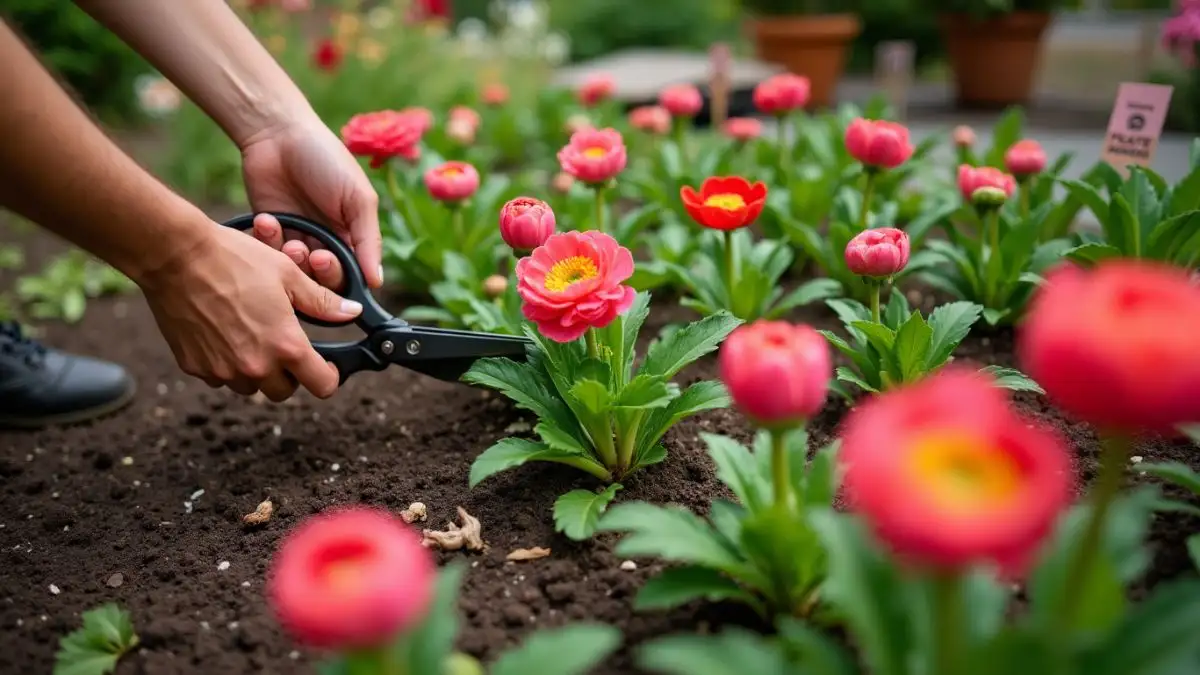
With a little care, you can enjoy a longer flowering season.
Deadheading
Frequently remove spent blooms to encourage the plant to produce more flowers. Use clean, sharp scissors to cut just above the closest set of leaves. Deadheading redirects the plant’s energy toward producing new blooms.
Mulching
Spread a layer of mulch to help retain soil moisture and regulate temperature. This is especially helpful if you’re growing ranunculus in pots, where soil can dry out quickly. Mulch also helps to inhibit weeds that compete for nutrients.
Stagger Planting Times
For continuous blooms, stagger your planting over several weeks. Planting new bulbs every two weeks guarantees a continuous display of flowers throughout the season.
Storing Ranunculus Bulbs for Future Planting
If you’d like to enjoy your ranunculus bulbs year after year, proper storage is essential.
Digging Up the Bulbs
Once the foliage turns yellow and dies back, dig up the bulbs carefully. Shake off excess soil and allow them to dry in a cool, shaded area. This step prevents mold or rot during storage.
Storing Conditions
Store the bulbs in a breathable bag or container filled with dry peat moss. Keep them in a cool, dark place (40-50°F) until the next planting season. Label your storage bags to avoid confusion when planting.
Additional Tips for Growing Ranunculus
Choosing the Right Pots
When growing ranunculus in pots, choose containers with good drainage. Pots at least 10-12 inches deep work best to accommodate their root systems.
Light Requirements
Ranunculus loves full sun. Ensure they receive at least 6 hours of sunlight daily. In hotter zones, provide some afternoon shade to prevent wilting.
Mulching for Winter Protection
In zones prone to frost, apply a thick layer of mulch over planted bulbs to protect them from freezing temperatures. This is particularly important when planting ranunculus bulbs in borderline zones, such as zone 7.
Frequently Asked Questions About Planting Ranunculus Bulbs
What is the ideal time to plant ranunculus bulbs?
Plant in the fall for spring blooms in warm climates. In cooler zones, plant after the final frost of spring.
Are ranunculus perennials?
Ranunculus is a perennial in warmer zones (8-11) but is commonly cultivated as an annual in cooler regions.
Can I grow ranunculus in pots?
Yes, growing ranunculus in pots is a great option, especially for small spaces. Use well-draining soil and ensure the pot has drainage holes.
What is the ideal zone for growing ranunculus?
Ranunculus thrives in zones 8-11 but can also be grown in other zones with proper care and winter protection.
How do I store ranunculus bulbs after flowering?
Dig them up, clean them, and store them in a cool, dark area with dry peat moss.
How long does it take for ranunculus bulbs to flower?
Ranunculus bulbs typically bloom 90-120 days after planting, depending on conditions.
Can ranunculus tolerate frost?
While ranunculus prefers cool temperatures, it is not frost-hardy. Shield bulbs from frost using mulch or frost cloth.
How many flowers does one ranunculus bulb produce?
Each bulb can produce 5-7 blooms, depending on care and growing conditions.
Do ranunculus bulbs multiply?
Yes, over time, ranunculus bulbs can multiply by producing offsets, which can be separated and replanted.
What’s the best way to water ranunculus in pots?
Water thoroughly once a week, making sure the soil is moist but not saturated. Check drainage to prevent root rot.
Conclusion
Planting ranunculus bulbs is a rewarding way to add beauty and vibrancy to your garden or home. By following these seven essential tips, you’ll ensure your ranunculus thrives and blooms magnificently. From preparing your soil to protecting against pests and diseases, every step is a crucial part of the process. Now it’s your turn—get your hands dirty and experience the joy of growing ranunculus bulbs. Ready to start? Happy planting!


